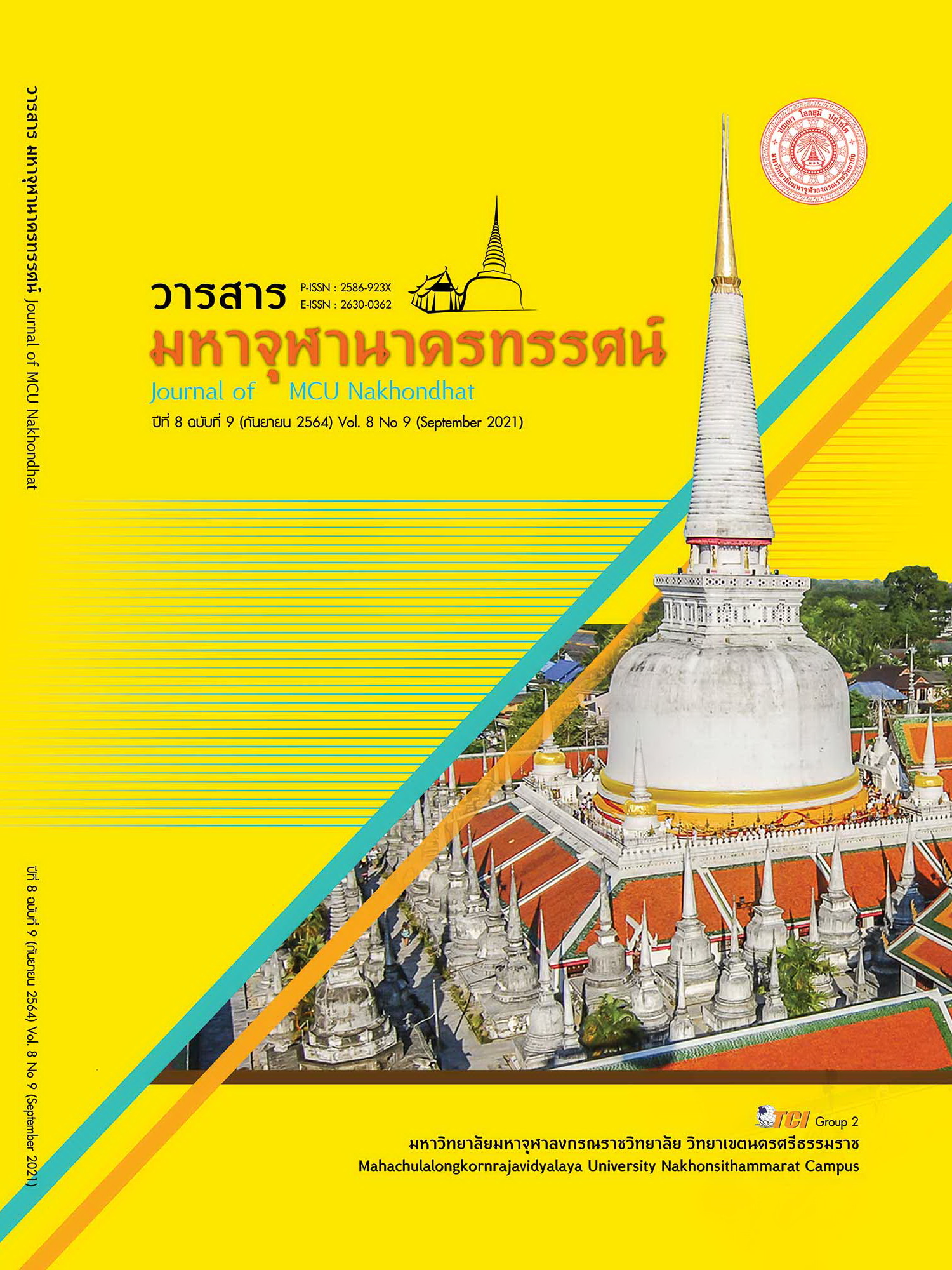THE STRATEGIES OF MANAGING WELL-BEING DEVELOPMENT ACTIVITES OF SECONDARY SCHOOL UNDER THE OFFICE OF THE BASIC EDUCATION COMMISSION
Main Article Content
Abstract
The objectives of this research were: 1) Study the current condition and desirable condition of the health development activity management 2) Assess and analyze the need for need for health development activities 3) Design of health development strategies for health development activities Phayha-ya research method Focus on quantitative information More than qualified, the population is a secondary school. Under the Company Limited, 2,358 secondary schools nationwide, sample groups, including 410 secondary schools, school tools used in this research, with 4 editions, namely 1) strategy questionnaire 2) strategy evaluation form 3) Strategy interview form and 4) Group conversation record Data analysis by using the SPSS software program using the mean statistics, mean, standard deviation and analyze the necessary requirements with the method of finding PNImodified. The research results were found that: 1) Current condition and desirable condition of the management of health development activities of secondary schools Overall, it is found that the current condition is moderate. There is a desirable condition at the most level. 2) Evaluate and analyze the need for need. Development of health activities of secondary schools with the need for development Intellectual health Followed by social health Mental health Physical health Is the last rank. 3) Strategies for the management of health development activities of secondary school consists of 4 aspects, namely the 1st side strategy of intellectual health. Side strategy 2 Social health the 3rd side strategy of mental health the 4th side strategy, health, physical health
Article Details
References
กรมสุภาพจิต. (2562). ปิดสถิติ โรคใหม่ ใน โลกใหม่. เรียกใช้เมื่อ 10 มิถุนายน 2562 จาก http://www.tcdc.or.th
ธัญญภรณ์ เลาหะเพ็ญแสง. (2554). การวิเคราะห์ความต้องการจำเป็นและการนำเสนอกระบวนการ นำนโยบายวิจัยในชั้นเรียนสู่การปฏิบัติในโรงเรียน. ใน วิทยานิพนธ์ครุศาสตรดุษฎีบัณฑิต สาขาวิธีวิทยาการวิจัยการศึกษา. จุฬาลงกรณ์มหาวิทยาลัย.
ประเวศ วะสี. (2551). สุขภาวะที่สมบูรณ์. กรุงเทพมหานคร: หมอชาวบ้าน.
พระราชบัญญัติสุขภาพแห่งชาติ พ.ศ. 2550. (2550). ราชกิจจานุเบกษา เล่มที่ 124 ตอนที่ 16 ก.
วรรณี แกมเกตุ. (2555). วิธีวิทยาการวิจัยทางพฤติกรรมศาสตร์ (พิมพ์ครั้งที่ 3). กรุงเทพมหานคร: โรงพิมพ์แห่งจุฬาลงกรณ์มหาวิทยาลัย.
สำนักพิมพ์แห่งจุฬาลงกรณ์มหาวิทยาลัย. (2563). นโยบายสำนักงานคณะกรรมการ การศึกษาขั้นพื้นฐาน ปีงบประมาณ พ.ศ.2563. กรุงเทพมหานคร: โรงพิมพ์ชุมนุมการเกษตรแห่งประเทศไทย.
สุวิมล ว่องวาณิช. (2558). การวิจัยประเมินความต้องการจำเป็น. กรุงเทพมหานคร: สำนักพิมพ์แห่งจุฬาลงกรณ์มหาวิทยาลัย.
Donettelle, R.J. & Davis. L.G. (1998). Access to Health (5thed). Boston: Allyn and Bacon.
Pender, J.N. (1996). Health Promotion in Nursing Practice 3 rd ed. Connecticut: Appleton and Lange.
Wongwung, A., et al. (2014). Change model of the attribute of students in terms of discipline, sufficiency living and . Procedia-Social and Behavioral Journal, 116, 3996-3999.
World Health Organization. (1998). Towards Health Schools. New Delhi: Regional Office for South East Asia.


